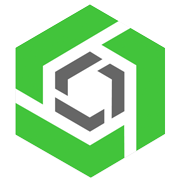In the world of product development, change is the only constant. Although the CAD (Computer-Aided Design) industry has witnessed significant innovations in recent years, the data management methodologies supporting them have consistently lagged a few steps behind — until, that is, the introduction of Onshape.
Cloud-native Onshape is the only system where the developers thought about the data management needs of the industry first – and then built advanced CAD tools on top of them.
In this post, we'll explore how Onshape’s built-in Product Data Management (PDM) system empowers hardware design teams using Agile development workflows. We'll contrast this cloud-native approach with traditional file-based PDM methodologies, which are still widely used – and often inadvertently create product development bottlenecks as they attempt to prevent version control issues.
A Glimpse at Traditional PDM Systems
Traditional file-based PDM systems were built on a simple premise: you store CAD files on a server, and when you need to work on them, you check them out (like a library book). Once you're done with a design file, you check it back in. This approach comes with its own set of challenges:
1. File Locking: When a file is checked out, it gets locked, meaning no one else can change it. This often creates bottlenecks in collaborative environments.
2. Loss of Iterative Details: These systems typically don't track every change – only the states of models when they're checked in. So, the iterative journey of a design, including minor tweaks and why they were made, gets lost.
3. Human Error: The rigid check-in/check-out protocols are often bypassed by designers, who in the interest of speed, make copies of files or work off the network, leading to version confusion and potential loss of work.
4. Lack of Real-Time Collaboration: Multiple designers can’t work on a design simultaneously with traditional PDM. They have to work on a file one person at a time, enforcing serial workflows versus real-time collaboration.
Modern PDM inside Onshape: The Agile Paradigm Shift
Onshape changes the game by transitioning CAD and PDM from a file-centric to a data-centric approach. Here's how modern PDM and CAD works:
1. Database Data Structure: Instead of standalone files, Onshape uses a robust cloud-native database system, where projects are stored in comprehensive Documents that can hold parts, drawings, assemblies, BOMs, imported data, and more.
2. Continuous Tracking: Onshape’s Edit History continuously tracks every design change, documenting who made each change, what was changed, and when. This transparency allows teams to understand every design decision.
3. Agile Design with Branching and Merging: Borrowing from software development best practices, Onshape allows designers to branch off any design version, innovate in their own space, and then seamlessly merge changes back. This promotes simultaneous collaboration and rapid iterations.
4. Version Control: With Onshape’s built-in PDM, the entire project is automatically versioned cohesively, with easy retrieval options and descriptive metadata. No more version confusion or lost files.
5. No More Locking: Real-time collaboration is now the norm. Designers can co-work on a document, witnessing each other's changes in real-time, a quantum leap from the check-in/check-out system.
Why Onshape Empowers Agile Development for Hardware
Agile methodology, which has long been a bedrock of software development, emphasizes flexibility, collaboration, and frequent feedback loops. Onshape's cloud-native infrastructure aligns perfectly with these principles:
-
Rapid Iterations: With a comprehensive Edit History and version control, designers can iterate more quickly, responding to feedback or new ideas seamlessly. Teams can instantly revert back to any earlier iteration of a design if desired.
-
Collaborative Design: Branching, merging, and real-time collaboration means teams can work together without stepping on each other's toes.
-
Customer Feedback: As designs are stored in the cloud, sharing with stakeholders and incorporating their feedback becomes more intuitive and immediate.
Time to Move on From Traditional PDM
While traditional file-based PDM systems have served their purpose, it's evident that they are ill-equipped to cater to the dynamic needs of modern design teams, who are often spread between multiple locations and time zones.
Onshape’s cloud-native infrastructure, Agile-ready workflows, and advanced data management capabilities are not just the latest design software features. They represent a brand new way of working where your cloud CAD and PDM bend to your company’s ever-changing needs – versus the old way of product development teams working around their software’s limitations.
Start Your Next
Project in Onshape
Find the cloud CAD plan that's
right for you and your business.














